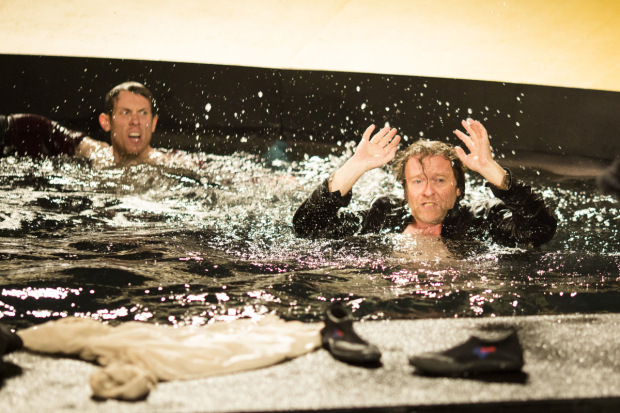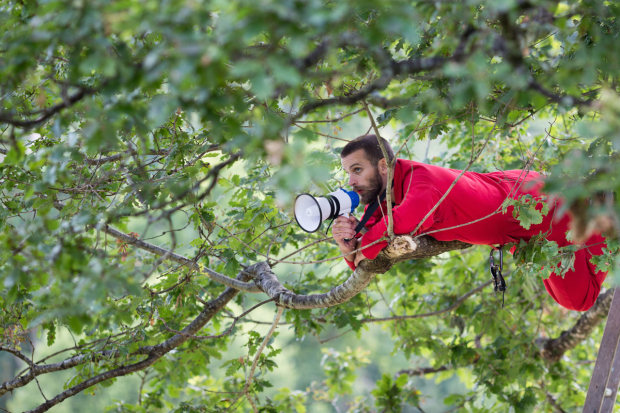Matt Trueman: We need to get out of theatres
Matt Trueman on how shows in spaces other than theatres can break down barriers and reach new audiences

© Helen Maybanks
We talk a lot, in theatre, about barriers to access – how not everyone feels comfortable in our cultural institutions. Architecture, expense, etiquette: all these things can put people off. The answer, surely, is to get out of them. It’s not the only answer of course, and nor should we abandon those buildings entirely. However, if we’re serious about getting people into theatre, it makes sense to take theatre out to people.
Last weekend, I caught the penultimate performance of The Tempest at Great Yarmouth Hippodrome, part of the Norfolk and Norwich Festival. It should have been a Grade-A opportunity to bring new audiences to Shakespeare – or rather, vice versa. A novel staging in a traditionally working class venue in a typically working class town, one that gets to see very little professional Shakespeare – that’s a brilliant thing.
Talk about a damp squib. The Great Yarmouth Hippodrome is an old water circus – one of two still functioning in the UK. Perfect, you’d think, for Shakespeare’s shipwrecks and stormclouds. And yet… this was perfectly banal: bog-standard Shakespeare with the odd splash, a few floats and some sprites synchronised swimming. What a waste of a unique venue, this huge open arena licked with jaded seaside glamour. No high dives. No fountains. No running, no bombing, no petting. What, I kept thinking, might Kneehigh have made of this space?
Worse, though, the production was old-fashioned, uncompromising and, frankly, confusing. Ariel was in a ballgown – a magician’s assistant. Caliban wore a hoodie – colonialism swapped out for class. For an audience not familiar with the play, that’s no help at all. Neither are theatrical references – Stephano and Trinculo as a music hall duo, in Beckettian bowler hats – or an insistence on the sanctity of the text. At the interval, one woman told me she hadn’t a clue what was going on. Honestly? Neither had I.
The Tempest wasted a unique venue: The Great Yarmouth Hippodrome is licked with jaded seaside glamour
In seeking new audiences and engagement, it’s not enough for theatre to get out of its natural habitat. It has to shake off standard practices and assumptions. It must adapt to the audience it wants to address.
The London International Festival of Theatre (LIFT) starts tomorrow and, if you look at its line-up, you’ll find a lot that’s doing just that. There’s a circus in a cemetery in Tower Hamlets, and aerialists in an old Oak tree in Tottenham. One installation will line the banks of the River Thames with beds, while another, Clare Patey’s Empathy Museum, will set up a shoe shop of sorts in a shipping container in Shoreditch. Ahead of a headline performance at the 2018 festival, choreographer Hofesh Shechter is sending dancers onto the rooftops of East London.
What these events share is that none of them are strictly theatre – certainly not in the way we tend to think about it. Patey’s sending people out on walks in other people’s shoes, for example, to listen to them talk about their lives. Rosemary Lee and Simon Whitehead’s Calling Tree, meanwhile, will have performers "beckon knowing audiences and unwitting passers-by alike, enticing them to stop, look up, contemplate and enjoy." This is art you stumble across by chance, woven into the fabric of the world; an injection of creativity into everyday life.
LIFT’s artistic director Mark Ball has form on this front. He programmed the first pianos in public spaces in Birmingham and launched an orchestra in hot air balloons to send music down on the city. Last LIFT, he sent a Haitian death march through Greenwich, and as we processed past council estates and pubs, swept up by bugles and beats, people came out to watch. Some even tagged along.
Anyone can encounter this theatre unexpectedly and it doesn’t require an understanding of the rules of theatre
All this is key to Charles Leadbeater’s essay The Art of With – a text that has fundamentally changed the way I’m thinking about theatre. Leadbeater looks at the extant model of galleries or venues. Each is "a special zone in which it becomes possible to see the world in a different way, to be raised up or deeply unsettled." These spaces are separated from our everyday lives; holy in the original sense of the world – that is, consecrated or set aside. Leadbeater likens the traditional gallery (or, for that matter, theatre) to "a kind of artistic bank vault into which the work rich in meaning is deposited for safe keeping."

© Tony Fanning
Under the principles of participatory art, art that seeks to bring people together, made with or alongside its audience, the gallery’s purpose changes: it becomes a meeting point, a site of interaction. "Indeed," says Leadbeater, "anywhere that makes that kind of creative interaction possible can become the site for a work of art." Car parks, community centres, cemeteries – all of these can become arts spaces.
Yeah, yeah, yeah – you might be thinking – it’s site-specific theatre, innit? I’d argue not. At least, not exactly. Site-specific theatre, in its late noughties heyday, was often characterised by secrecy. It was, at times, even more siloed and elitist than traditional art spaces. It was often underground or off-piste, in vaults and disused buildings – the sort of space you can’t just stumble across. You had to be in the know. You needed the password – sometimes literally so. Certainly, many shows required some understanding of how to behave. Even in the event itself, additional exclusivity could be built in. Hunt around a Punchdrunk show and, if you got lucky, you’d find yourself a secret passageway, having a bespoke, mask-off one-on-one experience. How special did that feel? How privileged?
No, this sort of work is different. It exists out in the open, in public spaces, often for free, sometimes without a strict beginning or end. Anyone can encounter it unexpectedly and, what’s more, much of it doesn’t require an understanding of the rules of theatre – a special way to watch in order to ‘get it.’ It is, in fact, integrated into everyday life. Think about The Sultan’s Elephant, that giant puppet striding through London, or The Passion of Port Talbot, an event that took over a town.
The same’s true of Slung Low’s large public shows – The White Whale in Leeds Docks or Beyond in the Frontline in Hulme. These are grand, free-for-all spectacles, often loud and lit up with pyrotechnics. Nor are they just that: The White Whale spoke about extremism in a community associated with the 7/7 bombers. Talking to artistic director Alan Lane recently, he likened them to fireworks displays – grand municipal events in the heart of a community that bring people together.
Isn’t this what great art for everyone looks like? Not hidden away in a theatre or a found space, but out in the world, part of everyday life. And not a barrier to access in sight.












